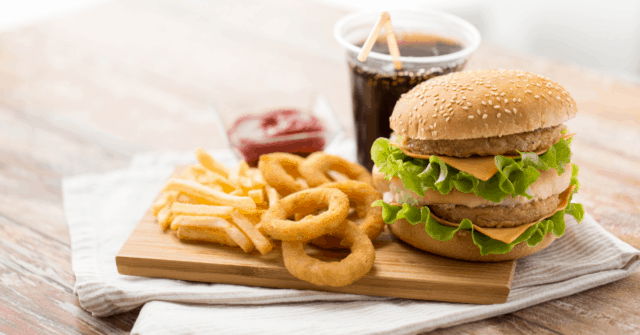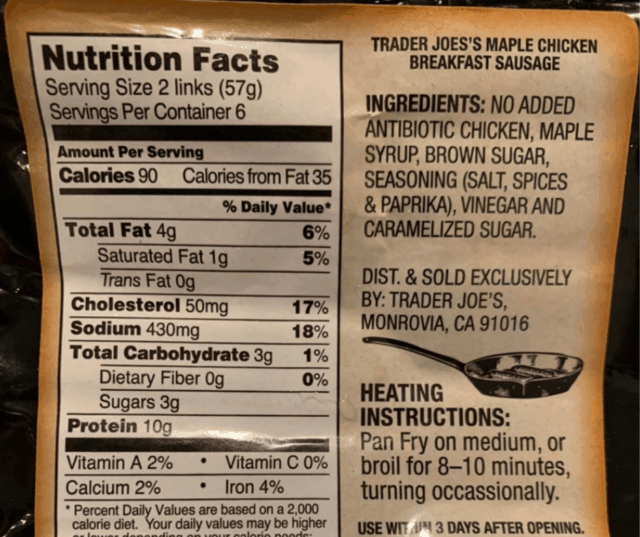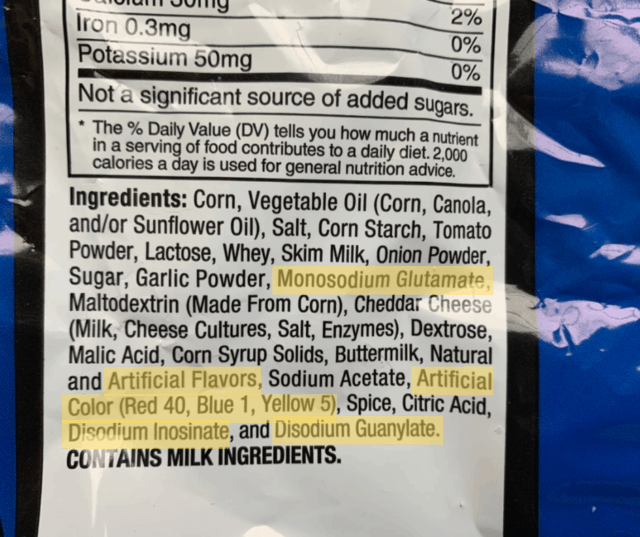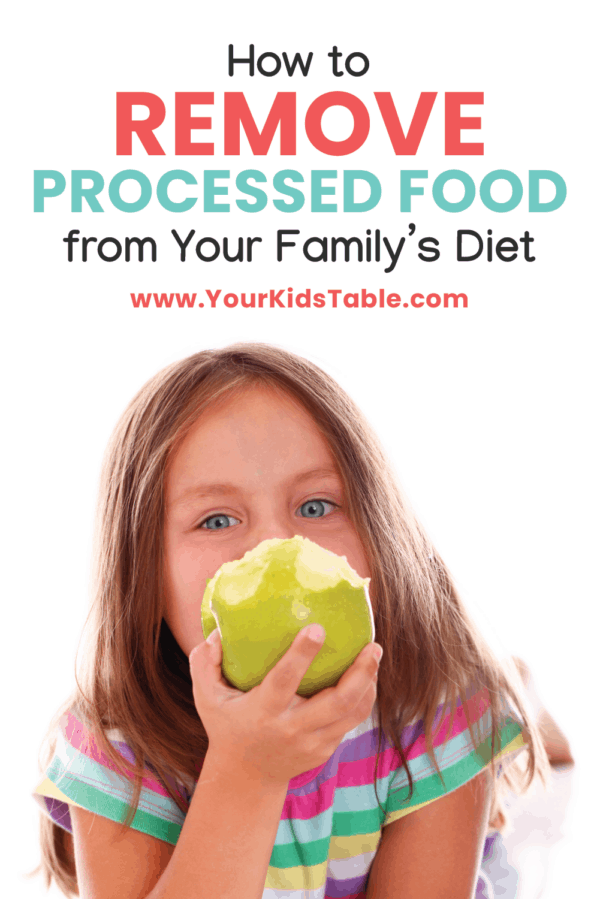Ready to remove or decrease processed foods from your family’s diet? I have you covered with 7 simple steps that are painless and eliminate stress. You can do this!
A couple of days ago, I got a text from my neighbor that read: “We are working really hard to remove processed foods from our diet! Do you have any articles, recipes, or stores to suggest?!? Or, just general shopping tips?!?”
I love getting texts like this from friends and neighbors that want to make a healthy change in their life, but I quickly realized I didn’t have any helpful resources to share. So much of what I’ve learned has been pieced together from my own research over the last decade. And, the truth is, it’s a process. While I personally eat nearly no processed foods, and, for health reasons, have been maintaining a Paleo diet for 3 years, my family’s journey is a little different.
As this time of year has a way of doing to us, maybe you too are thinking of how to eliminate or at least cut back on processed foods? Or, maybe you want to take some steps in a healthy direction.
My friend said that once she realized she wanted to take steps to eliminate processed foods, she had a moment of panic thinking, “WHAT are we going to eat?!?!” That’s normal! Of course, there are a lot of non-processed foods to eat and enjoy, once you start to learn what they are.
No Food Shame or Becoming a Food Snob
If you’re reading this post because you’re a loyal Your Kid’s Table follower, but feel good about your diet that includes processed foods, that’s great. While I personally choose to not eat processed foods for a variety of reasons, that I’ll explain in a minute, that doesn’t have to be your choice.
Kay Toomey, a psychologist and creator of the SOS Feeding program, often says, “Food is food.”
And, there’s wisdom in that statement. My Mealtime Works students will tell you that I urge them not to focus on nutrition first. The most important goal is that you and your family are eating, whatever that is. I never want to judge anyone for what they choose to eat, or in many cases, what food is available to them.
We all have different thoughts and individual family culture around the food we eat. It’s important that we respect that and the food choices we each make for our family.
We need to be aware so that we don’t shame others for what they choose to eat. Education is one thing. Lecturing and looking down on somebody with their lunch from McDonalds is another.
What Are Processed Foods?
Processed foods are anything that is made through a process. For a lot of the food on the shelves in a grocery store, this means food that was manufactured in a factory. Some processed foods only contain a few ingredients like store bought plain yogurt, flour, or cheese, that means it’s minimally processed.
While other foods are highly processed with dozens of ingredients. Think frozen pizza rolls, popular branded kids cereal, and pre-packaged snack foods. The more ingredients a food has, the more processed it likely is.
Think about when you buy fresh produce, often there are no ingredients listed.
If you buy an apple, what you see it what you get. There are no ingredients to list because it’s a whole food.

What’s Wrong With Processed Foods?
Processed foods often contain additives, preservatives, and food coloring. Some people have sensitivities to those added ingredients that cause all sorts of health problems from poor attention to headaches. One study found that they can increase your risk of cancer.
Plus, highly processed foods often have added sugar, salt, and fat, which of course can lead to more health problems.
Besides the ingredients in processed foods, they’re often digested more quickly, which makes you get hungry faster, only to eat more processed foods. Click here to read more about the dangers of processed foods.
How to Remove Processed Foods From Your Family’s Diet
You might be feeling motivated to cut processed foods out of your diet, but like my neighbor, you don’t know where to start. Quitting processed foods cold turkey won’t work for the vast majority of families as it would cause a lot of food waste and stress to make such drastic changes to an activity you participate in at least 3 times a day!
You’ll likely have much more success if you take it one step at a time, at a pace that’s comfortable for you and your family.
Step 1: Reduce Don’t Eliminate
Once you start to look around at the foods you eat, even the ones you considered to be “healthy”, you’ll see how processed they are. It can get overwhelming fast. Take a deep breath and identify the most highly processed foods you and your family are regularly eating and look for other alternatives that are less processed. In some cases, this may mean making your own version from scratch.
For example, instead of using a can of cream of chicken soup for your casserole, you use chicken broth, and thicken it up with some flour or cornstarch. Of course, technically, flour is also processed. Yes, it’s usually just one ingredient, but you can’t grow or raise “flour”. You grow wheat and then process it to turn it into flour.
Again, this is a minimally processed food. After you begin to reduce your highly and moderately processed foods, you can decide if you truly want to eliminate all processed foods which would be a Whole 30 style type of diet. Obviously, that isn’t for everyone.
The goal of this first step is simply to start looking for other alternatives. This could mean buying a different brand that is far less processed.
Step 2: Read the Label

I had a nutrition class in high school and we learned how to read a nutrition label, the focus was on the fat, calories, salt, etc. I knew that the ingredients were listed there, but not until I began this journey did I start to read those ingredients or take note of how many were listed!
You probably have an idea of what processed foods are sitting in your pantry, fridge, or freezer. But, you’ll likely be surprised by some once you flip the package over and read the label. Here’s what you want to look for:
- Low number of ingredients – remember the higher the number of ingredients, the more processed the food is
- Ingredients you understand – additives and preservatives have many names, these ingredients can’t be bought on their own and that’s a red flag.
For example, a box of crackers that has the following ingredients: wheat, olive oil, salt, parsley, and garlic is lower processed than the a box of crackers with 25 ingredients, some of which you’ve never heard of before. Make a list of any foods that fit into this higher processed category, and when you’re finished, look for an alternative in the grocery store.
WARNING: You are learning and while you are flipping over packages to read the label, your shopping will take longer. But, once you find new products that are less processed, you don’t have to keep checking the labels unless you want to try something new.
If it’s an option for you, shopping at health food stores like Trader Joe’s, which is budget friendly, and Whole Foods, make shopping much easier. For instance, in addition to nearly all foods being non-GMO (not genetically modified), all the foods in Trader Joe’s don’t have the ingredients in the next step, with the exception of Sodium Nitrite…
Step 3: Avoid Specific Ingredients

As you read the labels of foods, you’ll specifically want to look for these ingredients to avoid:
- High Fructose Corn Syrup
- Mono Sodium Glutamate (MSG) – this is added to food to keep you eating more, linked to headaches and other health problems
- Artificial Food Coloring – usually listed as Red 40, Yellow 5, etc. Some studies link this to hyperactivity.
- Sodium Benzoate – preservative linked to cancer, ADHD, and more
- Artificial Flavoring
- Sorbates, Propionates, and Sulfites – all preservatives
- Butylated Hydroxy Anisole (BHA) – preservative usually found in butter and lard
- Butylated Hydroxy Toluene (BHT) – preservative that has been banned in some countries because of it’s links to cancer
- Sodium Nitrite – preservative commonly found in bacon, sausage, and deli meat
If your child is a picky eater and only eats a few foods, then you may not be able to eliminate a food that has these ingredients. Instead, look for as close of an alternative as possible, sometimes a different brand can have very different ingredients, but taste similar. This will take time, of course, with an extreme picky eater.
Get more help for picky eaters in our free workshop!
Remember, it’s a process, not something that will change over night. Another option is to begin to offer foods that are similar, but not exactly the same. For instance, if you don’t want your child to have Doritos, try regular tortillas chips. There are many available with only a few ingredients.
Step 4: Cook Simply
While I myself am Paleo, my family is not. They still have some processed foods, but we’re always working to reduce it. One way we’ve done that over the last 3 years in particular is to cook more simply. Instead of dishes with multiple ingredients, I grill chicken and we have a side of potatoes or pasta and a veggies and/or fruit.
I do bread meats too, which is a great trick for picky eaters. My youngest still won’t eat plain chicken yet. He’ll take it on a bun or if it’s breaded, sometimes a chicken wing, but he’s not ready to just eat plain chicken breast. When I want to make sure he eats the chicken, I combine some type of breading.
While I don’t do that every time, to help him make this transition, I make these simple homemade chicken nuggets.
Step 5: Meal Plan
Are you rolling your eyes? I know meal planning can feel like a drag, but it can be immensely helpful when you want to avoid reaching into the cupboard or fridge for something processed at the last minute. When you have a plan, you’ll be so much less tempted to do that.
However, give yourself some grace for when it does happen, because it will.
Meal planning also gives you full control over how much you want to cut out processed foods. For instance, it’s probably too overwhelming to cut out processed foods at all meals, but you might be able to swing it for dinner 5 nights a week. When you plan out your meals, you choose in advance when your family will eat what and that will give you confidence and peace of mind.

Step 6: Be the Example
I always encourage parents to eat what their child is eating, but as you begin to offer new brands and other types of food, your child may be resistant to the change. Avoid lecturing them when you offer these new and lesser processed foods. Focus on simply eating the new food. This may not matter to your child very much the first or second time you eat it, but in the long run, it will pay off.
As your child asks questions about food, answer them conversationally. Try not to overload them with too many facts. Check out How to Teach Your Child About Nutrition, so it doesn’t backfire and cause picky eating.
Step 7: Continue On
I can’t overstate this, removing highly processed foods is a process itself. It will take time. Try not to be too hard on yourself. You also have to find a balance for allowing your kids to have some highly processed foods at times, if they want them. Demonizing or making processed foods 100% off limits can lead to eating disorders and over eating later in life.
If your child is really upset about not having their favorite cereal that you’ve bought for years, you may want to buy it occasionally, so they can still have it at times.
As your family begins to eat processed foods less and less, you’ll likely notice that you don’t feel well when you do eat something highly processed. This has started to happen to my kids in the last year. Of course, they didn’t realize that they had heartburn because they just ate a pile of candy, chips, and soda.
At these times, I’m careful not to take a “I told you so” attitude, but instead ask questions like, “Hmm, I wonder why your body feels that way?” Then, we have a discussion about how the foods we put in our body can cause us to feel good or not-so-good.
I need to hear from you on this one! Leave a comment below and tell me how you feel about processed foods, what changes you want to make for your family.
What other questions do you have? We’re here to help!
Healthy, Not-Processed, Recipes for the Family
Scrumptious Gluten Free Meatball Recipe for the Whole Family
High Fiber Immune Boosting Banana Sweet Potato Pumpkin Bread
Crispy Whole Roasted Cauliflower Recipe: A Perfect Veggie Recipe for Kids
Natural Weight Gain Smoothie Recipe for Kids
No Trouble Baked Potato Skin Recipe for Picky Kids
Alisha Grogan is a licensed occupational therapist and founder of Your Kid’s Table. She has over 15 years experience with expertise in sensory processing and feeding development in babies, toddlers, and children. Alisha also has 3 boys of her own at home. Learn more about her here.

Thank you for this article. I know I need to transition my family, but have felt overwhelmed at the thought. Thank you for giving me this “pep talk” and guide for how to get started and stay the course mentally.
Hi there!
You are so welcome! Please let us know how things are going!
Best,
Laura
Your Kid’s Table OT
I appreciate this helpful and informative post.
I just thought it should be noted that commercially processed flour is immensely bad for our bodies with little to no nutritional value. And should not be considered a “minimally processed” food. It is a huge reason Americans are so sick, and should be drastically reduced in our diet.
God bless.
Thanks Dallas!
Best,
Your Kid’s Table team member